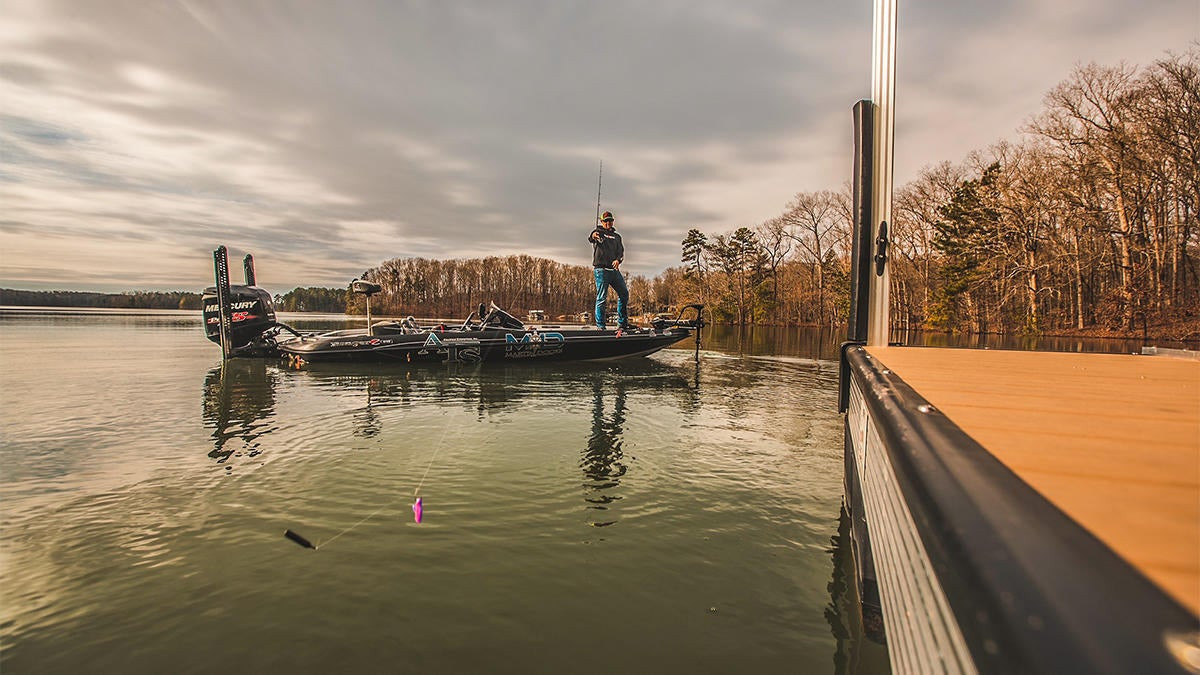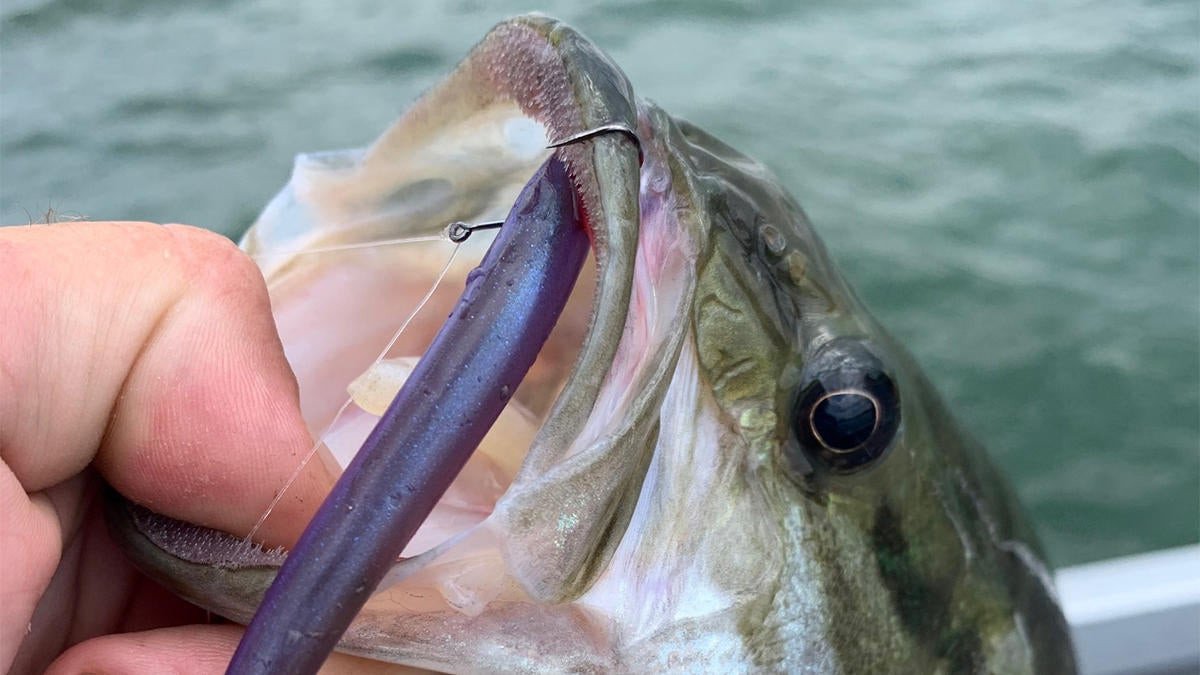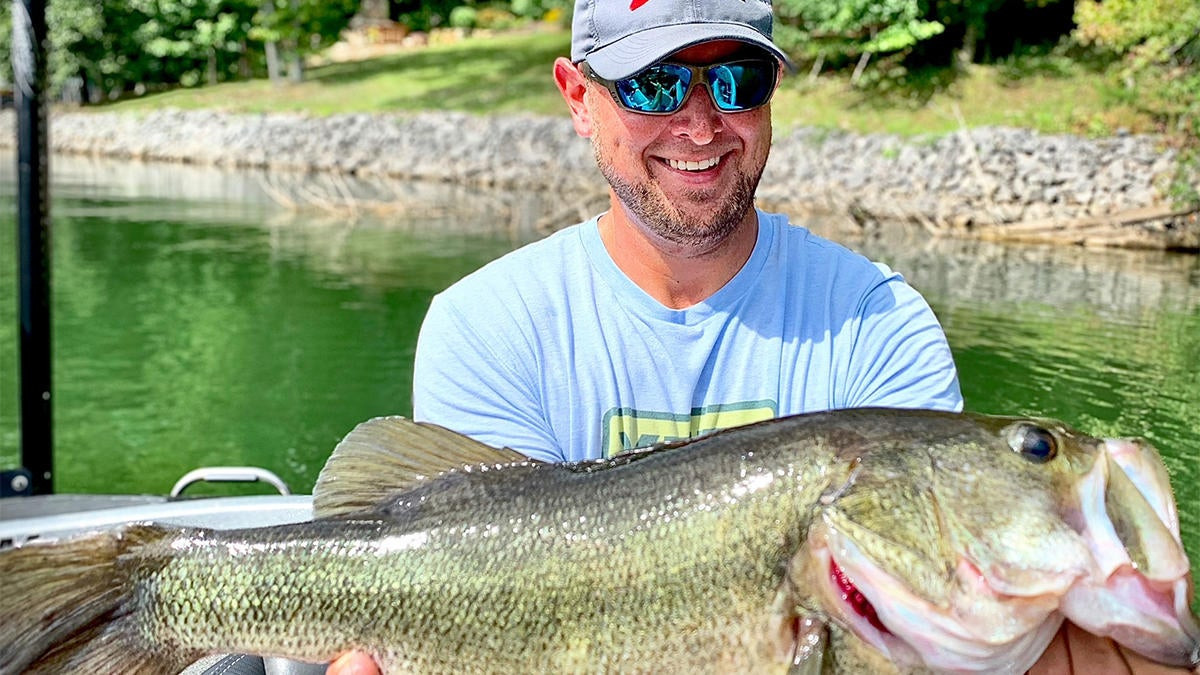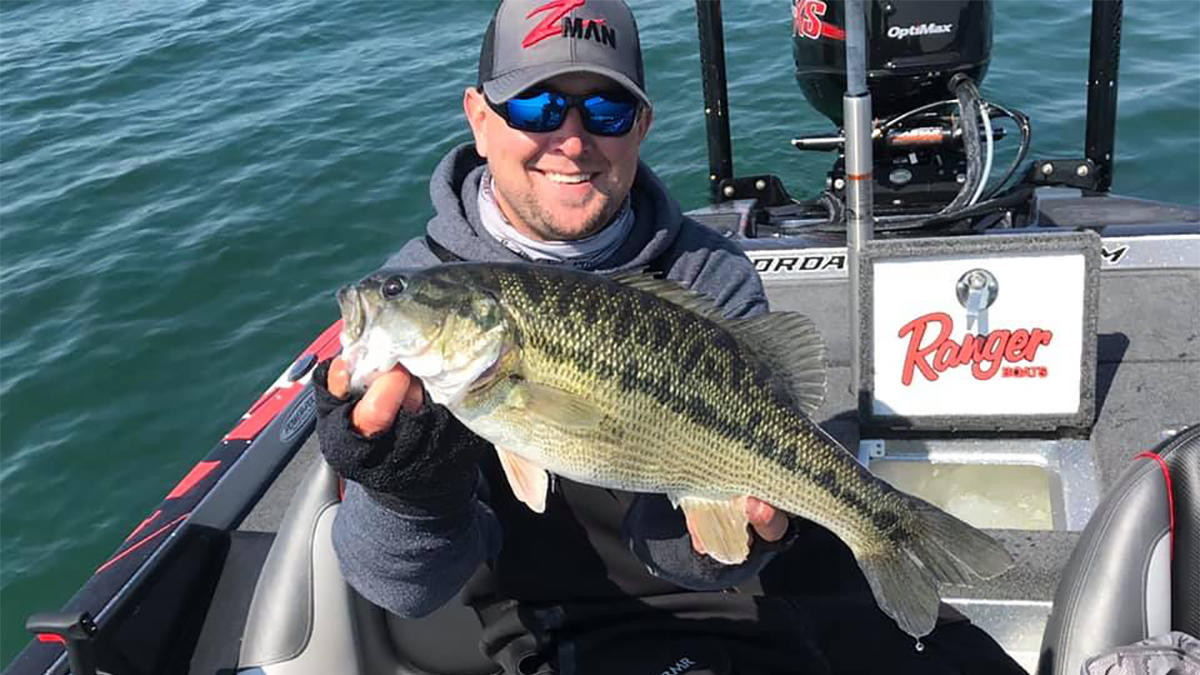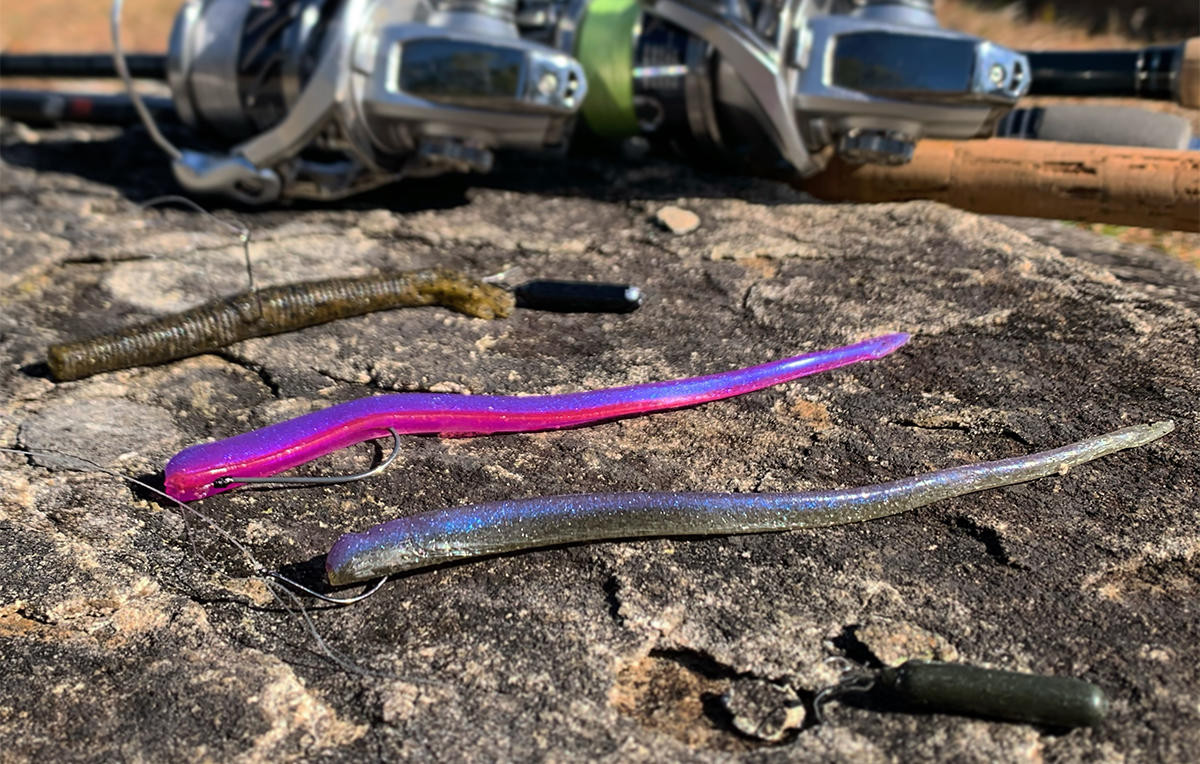The drop shot rig is undoubtedly one of the most popular finesse presentations throughout the country. Although the drop shot is often associated with deep-water, vertical, video game-style fishing, you may be surprised to know it’s also one of the most versatile options in your arsenal.
Having spent more than the last decade as a professional bass guide on Georgia’s Lake Lanier, it’s a rig on which I heavily rely; it is, without a doubt, the number-one presentation I recommend my instructional clients to learn. I view it as the one of the fundamentals of becoming a more consistent angler and a more versatile tool than the well-known shaky head. It’s something I’ve dedicated a significant amount of time to learning, even though my roots are more in line with shallow-water power techniques.
It catches bass all year long whether it’s largemouth bass, spotted bass or smallmouth bass. You may have even noticed that it’s starting to become a common tool for triggering big fish on the Tennessee River system. When they’re grouped up offshore and aren’t responding to the oversized baits they’re known for eating, folks have found that downsizing with a finesse approach can activate schools that previously seemed uncatchable.
You don’t always have to fish it vertically, though. Let’s dig into the versatility of this technique.
Casting
We know the rig has proven itself to be a staple for vertical fishing, so it would only make sense it would also work casting to the same fish once they stop biting under the boat, right? Maybe the fish are set up a little too shallow to fish vertically or are scattered due changing weather conditions or increased boat pressure.
The fish on the lakes I guide on (Lake Lanier, Hartwell & Chatuge) have taught me many things over the years. But one of the most important things is that they are very aware of your presence most times. I’d say they are more wary of shadows and sonar noise than any bass I’ve experienced anywhere in the country. I know many of my friends on tour will attest to that as well. With these lakes being constantly pressured and the regional headquarters for guys trying out the latest and greatest electronics, they can certainly be fickle sometimes.
Anglers often view fish in 20 or 30 feet of water as “deep” or “far away”. When in reality, it’s not much different that you standing at the trolling motor and catching a fish right behind the outboard.
Let that sink in for second. They’re not far away.
You’ll find that casting and working the areas thoroughly where you’ve marked fish can be highly effective while showing them a different look from traditional bottom baits. I’ll often use this casting method to target boat docks, isolated grass beds, bridge columns or other vertical structure around which fish may suspend during the year. I’ll also use it to cover flats where spawning bass set up a little too deep to see, all the way out to the structure-oriented fish I referred to above that have simply had enough pressure from fancy electronics all year long.
Regardless of the depth you’re fishing , showing them something different that naturally rests right above the bottom can unlock schools of bass that seem unresponsive to anything else. The key part to this is to use a variety of retrieve styles to determine how they want it. I’ll try a slow drag-and-stop if there’s wave action or current available or a light shake-and-pause if it’s fairly calm. Often times the one key factor is making sure the weight always stays in contact with the bottom and the rig isn’t being pulled around too much. Mix it up but always pay close attention to how you’re fishing it when the bites occur.
Shallow
Another option for branching out with the drop shot is keeping it handy for picking off bass in just a few feet of water. When fish are up shallow, they can often be wary of larger, heavier baits especially if the water and sky conditions are calm and clear. No matter if they’re up cruising, spawning or patrolling a bluegill bed, wacky rigging a 4-inch stick worm on a 3/16-ounce weight is a way to catch bass that don’t seem to respond to anything else.
In most cases, I’ll keep a shallow-water drop shot rigged on a spinning rod with an 8- or 10-pound test fluorocarbon leader simply for the accuracy and ability to make as subtle of a presentation as possible. I’ll also typically keep the distance between the weight and hook a little shorter than I would for deeper water. In most cases I’ll make it 6 to 10 inches so the bait settles in as natural as possible, even in just a foot or two of water.
The 6-pound largemouth in this picture was caught on a 6-inch drop shot worm from Z-Man last summer called the Long ShotZ. I had it rigged on a light-action rod with 6-pound test for fishing deep-water brush piles for spotted bass earlier in the day on a client trip. After working a shallow area throughly with topwater lures and jigs, we were both left with the unexplainable feeling to which all fishermen can relate.
“There has to be some fish up there.”
One cast after turning the boat around to revisit the area resulted in a heck of a fight on a light-action setup. But perhaps more importantly, it opened our eyes that day that a different approach can change the outcome of a day on the water.
Drop shot in heavy cover?
Often referred to as “power shotting“, fishing a drop shot on heavier tackle can be a game changer in heavy cover. Laydowns, stump fields, fixed-post boat docks and even vegetation are all places you can have great success with this type of modified drop shot rig.
Make sure to adjust your line size and weight accordingly and don’t hesitate to fish it on a casting rod. The main objective is to show them something different and this is also highly effective in situations where the fish don’t sit right on the bottom such as areas where bass relate to cover but are often suspended due to soft mud and silt like tidal rivers.
Bass don’t like soft bottom composition most times. Silt and sediment in the water is like us sitting in a smoke-filled room. It’s hard to breathe and other forage species will suspend off the bottom as well, making a modified drop shot a deadly approach in those scenarios. This also applies to lakes or ponds that have a bottom that’s covered in short grass or moss. They will stay just above that in most cases.
I’ll fish this primarily rigged Texas-style with a variety of plastics. Everything from a traditional 6-inch straight worm all the way up to beefier creature baits and 10-inch worms. I typically prefer a straight-shank hook with a small keeper but I’ve also had great success fishing bigger plastics on heavier EWG-style hooks in some of the thickest cover around, even on straight braid in heavy vegetation at times.
The set up
No matter what part of the country you’re in or what species you’re targeting, there are ways to think outside of the box when it comes to drop shot fishing. My tackle setup will vary somewhat when it comes to line size, hook style and even the bait I choose to use, but here are a few general rules I go by when rigging up .
I use a Palomar knot every time. Leaving a long tag end, looped back through the hook eye from the top-down. Then I’ll trim it to the appropriate length for the weight below the bait. Generally around 12 inches is a good all around length which leaves you a little extra in case you need shorten up. On the opposite end of things, I’ve caught fish many times with up to a 4-foot gap between my hook and weight in deep-water situations for spots and smallmouth. Just mix it up until you find the right length.
I’m always fishing this on fluorocarbon and will adjust the line size from 6- and 8-pound for clear water up to 15- and 20-pound leaders for heavy cover.
Lastly, the weight size is critical for presenting your plastic as natural as possible. Contrary to what many may believe, heavy isn’t always best. My favorite weight for all scenarios from shallow to deep is a 1/4-ounce cylinder-style weight for versatility and a quick descent to the bottom. I will bump up to a 3/8- or 1/2-ounce in strong current and waves while fishing deep water or in thicker cover when needed.
Bottom line… think outside of the box when it comes to the drop shot rig. Put in a little time with it and you’ll find that it can be a player in almost every bass-fishing scenario.
Rob Jordan is a professional bass guide and tournament angler specializing in angler development and electronics instruction. Find out more and get in touch with him at RobJordanFishing.com.


